The last travelling shepherds of Switzerland
Travelling shepherd José Carvalho moves his flock of sheep across Switzerland throughout winter. It’s a traditional farming practice that’s become much more difficult due to the growing urbanisation of the Swiss landscape. Photographer Moritz Hager spent a day on the road with him and his animals.
In summer, José Carvalho is to be found with his 800 sheep on an Alp in canton Graubünden, in the south east of Switzerland. In winter he travels through the district of Winterthur, near Zurich, with 460 or so animals, always on the lookout for meadows where his sheep and donkey can graze.
It’s not easy for him to find a spot between the roads, housing estates, motorways or off-limits fields that make up the patchwork of the landscape. José and his herd are a spectacle to be seen, passersby stop their cars to take pictures of the unexpected mass of farm animals traversing the tarmac roads.
A long tradition
Born in Portugal, José Carvalho lives with his family on the ‘Tutschgenhof’ organic farm in canton Zurich, he is one of the few shepherds left in Switzerland who hikes from pasture to pasture with his herd and two trusty sheepdogs. Exactly how many wandering shepherds still exist in Switzerland is hard to estimate. Nowadays the dense population, farming infrastructures and competition for agricultural land have made it more difficult for the shepherds to find their space in modern society. This has contributed to the declining number of travelling shepherds: there are approximately 40 herdsExternal link still on the move in Switzerland today.
Shepherds watching over their flocks has a very long tradition in Switzerland. Herders in southwestern Switzerland began as far back as 5,000 BC to drive their herds by foot to pastures situated at around 2,750 metres above sea level in the Alps.
Allowed, but with restrictions
In canton Zurich, travelling shepherds need a permit from the veterinary office to be able to wander through the region. Regulation covers how many animals per shepherd are allowed, and is closely monitored – a maximum of 400 fattening sheep (lambs born in the spring which will be taken to the slaughterhouse after grazing on the pastures) per shepherd, to be overseen by at least two dogs. Not only the canton, but also the farmers themselves must grant permission for a shepherd to cross their land with the animals.
With their thick woolly coats, sheep are very resistant to cold temperatures and can scratch their food from under a thick layer of snow – they also eat frozen grass, unlike cows. However, according to Swiss Herd ProtectionExternal link, if weather conditions form compact ice after rainfall, the animals must be given additional food or the winter migration across the countryside has to be brought to a halt.
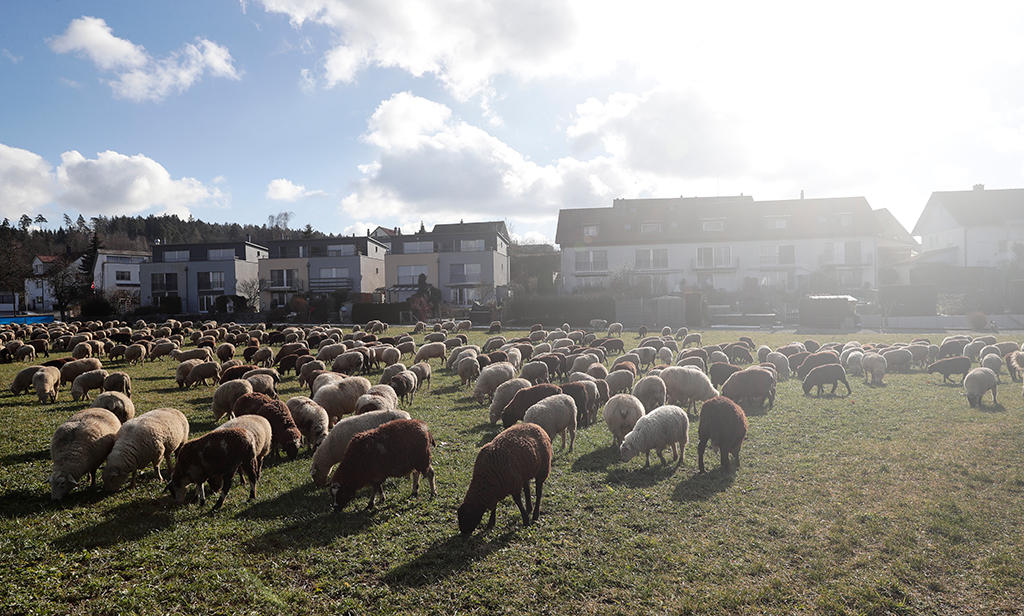
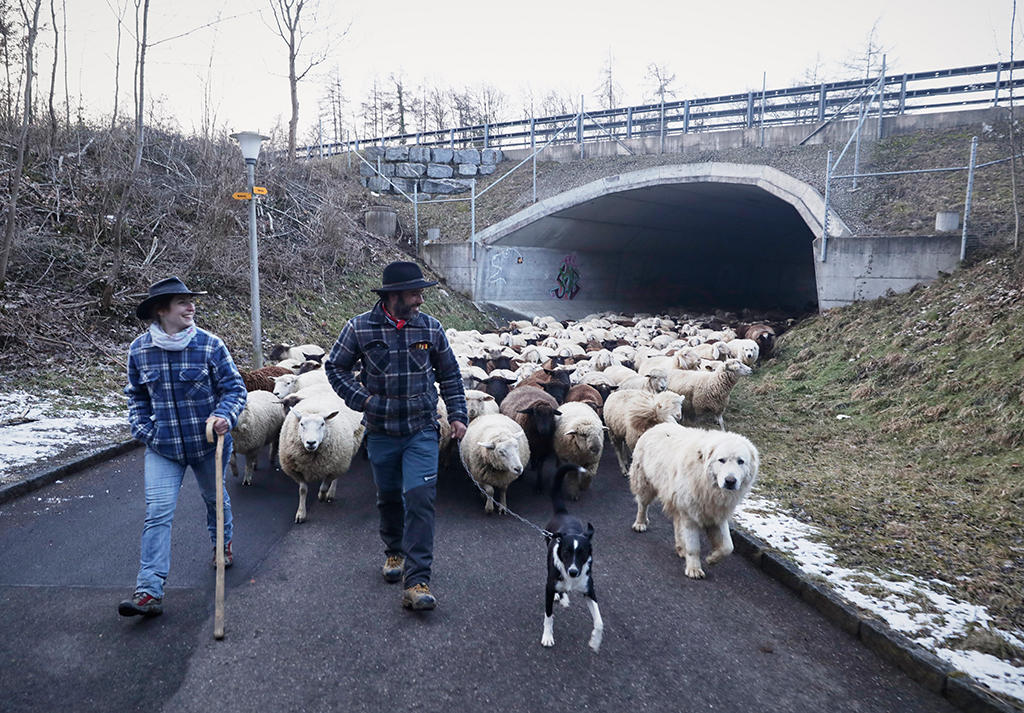
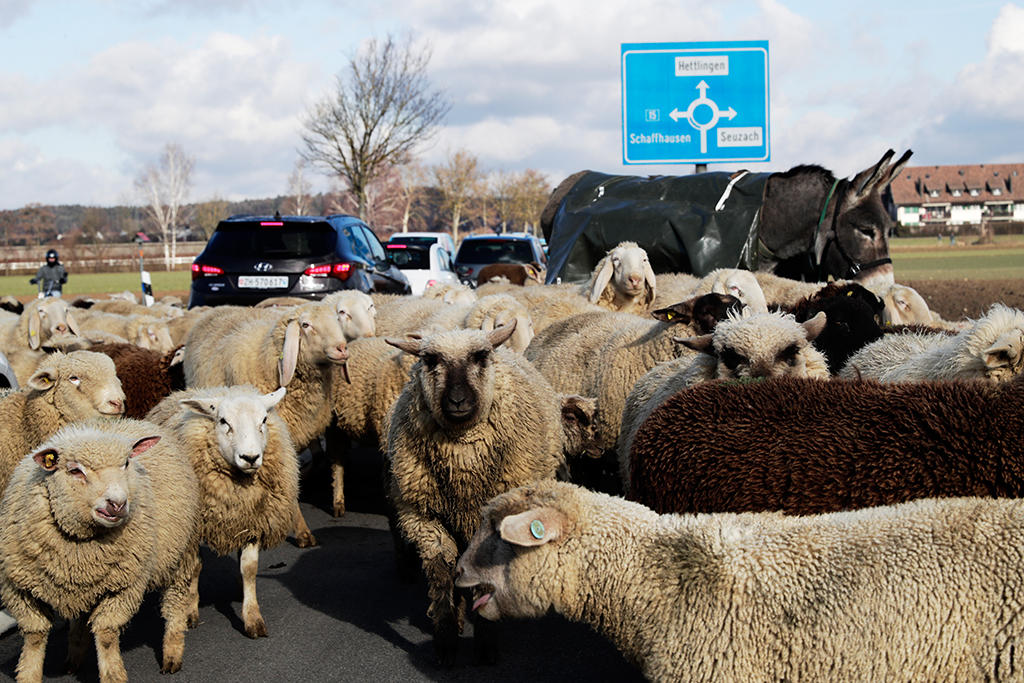
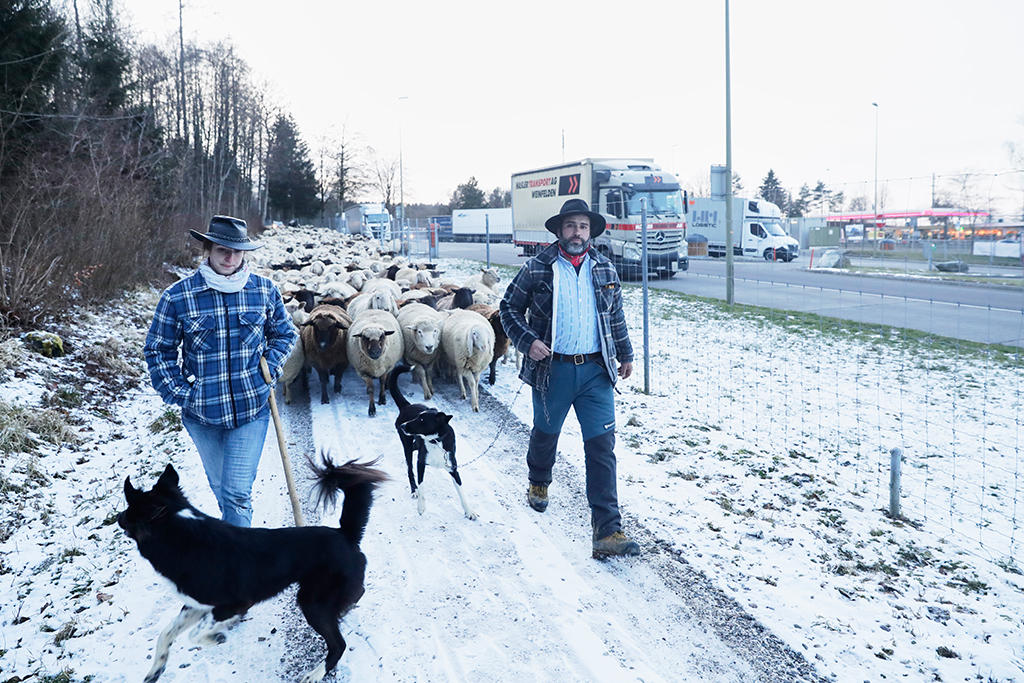
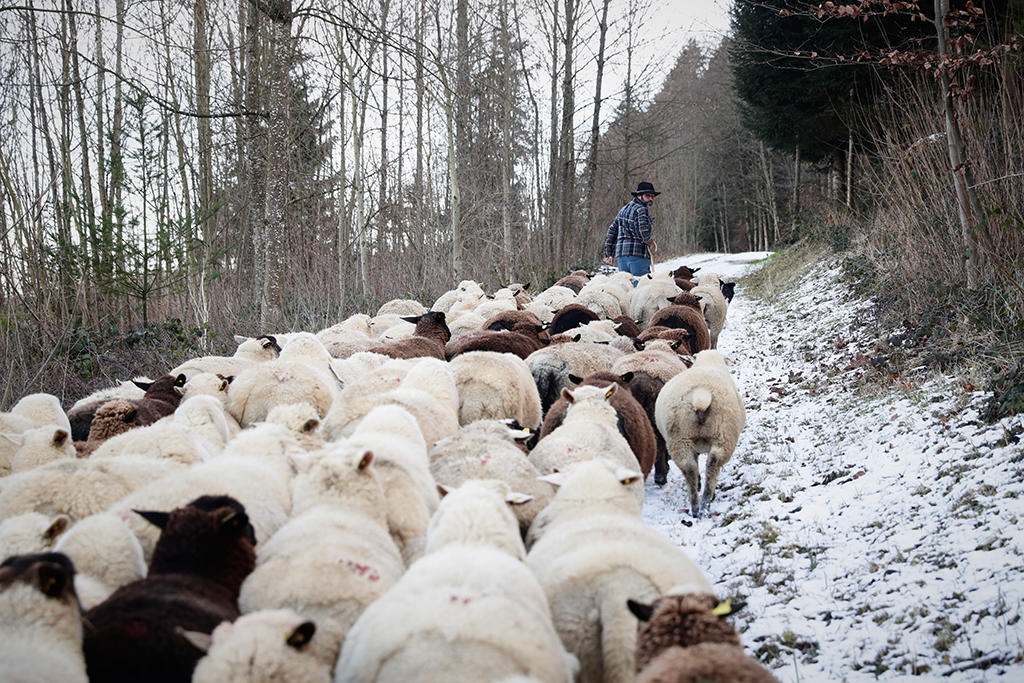
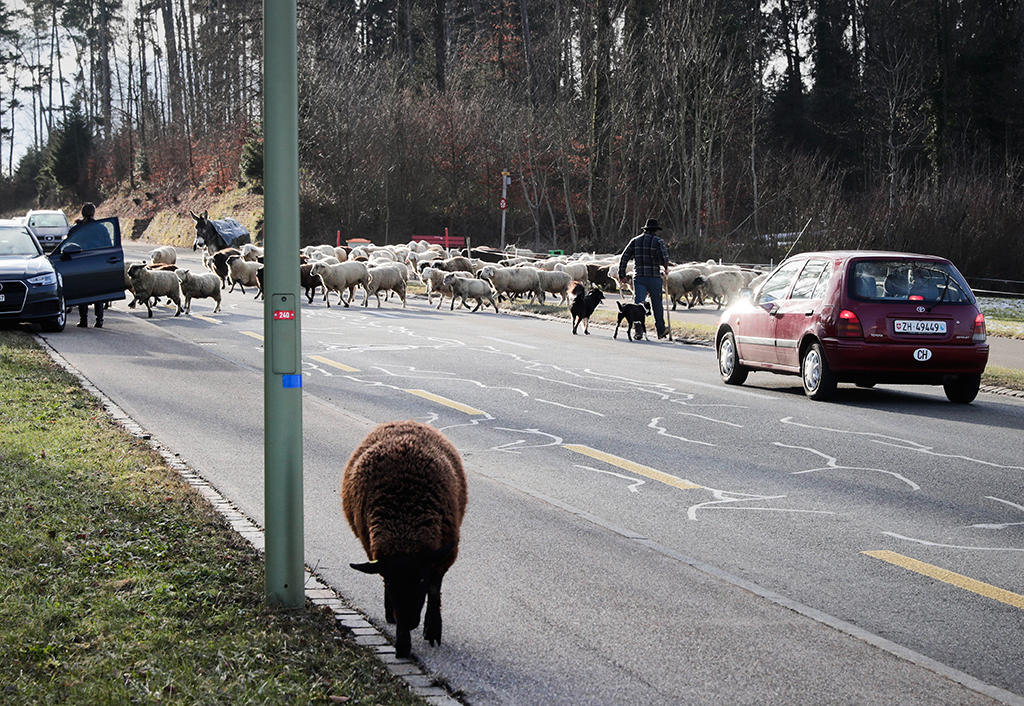
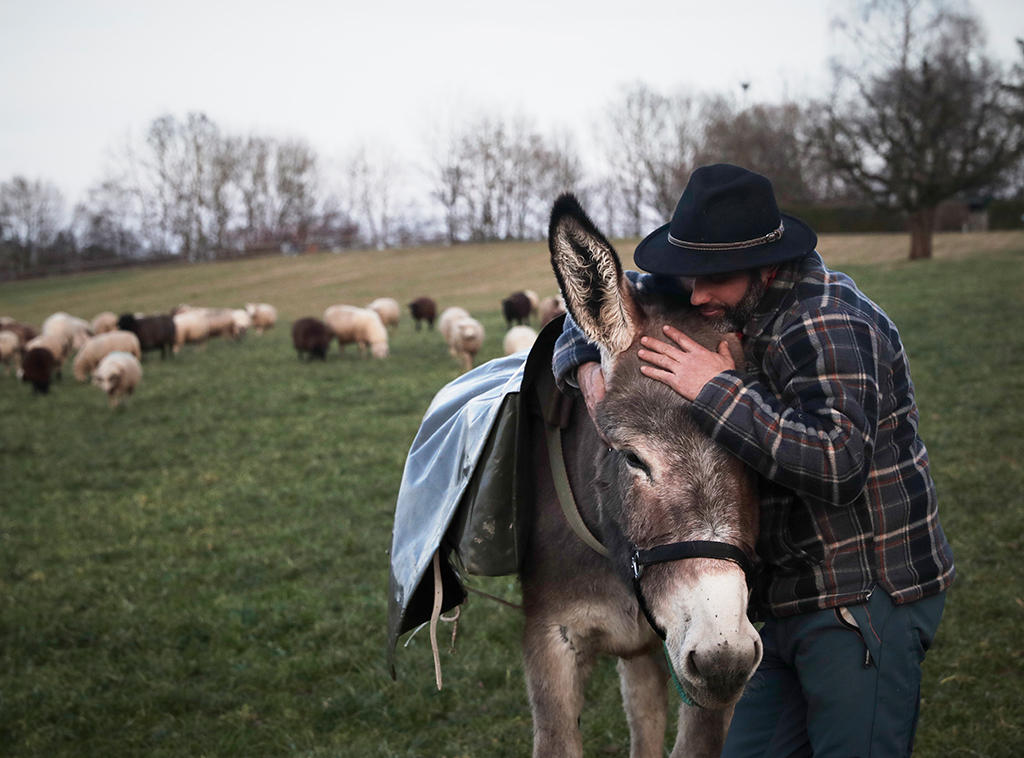

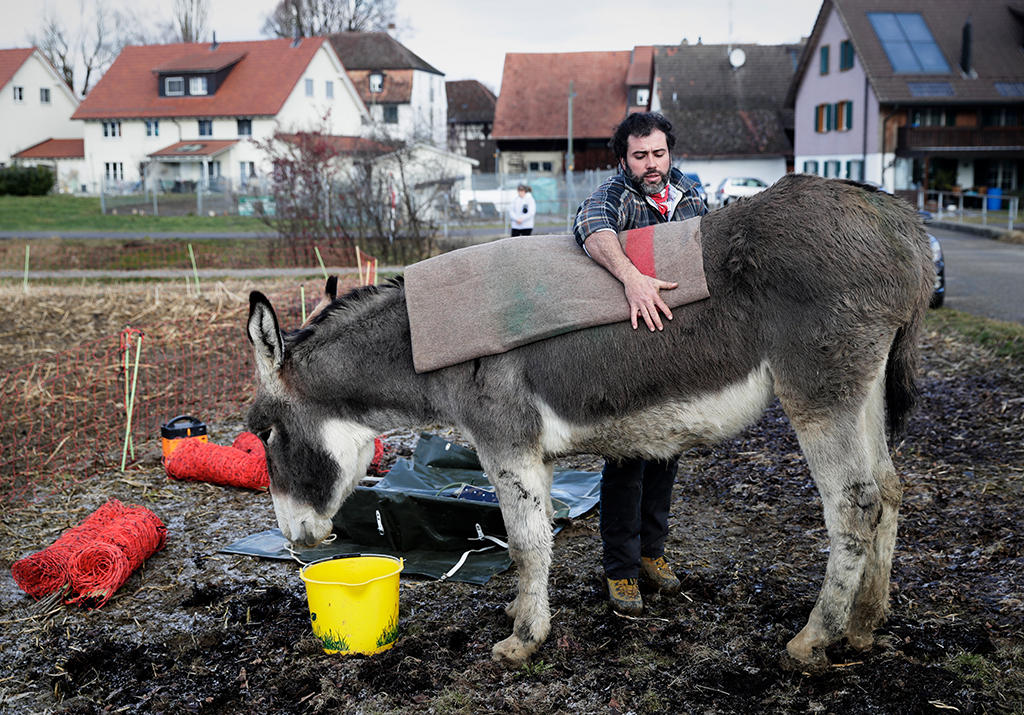
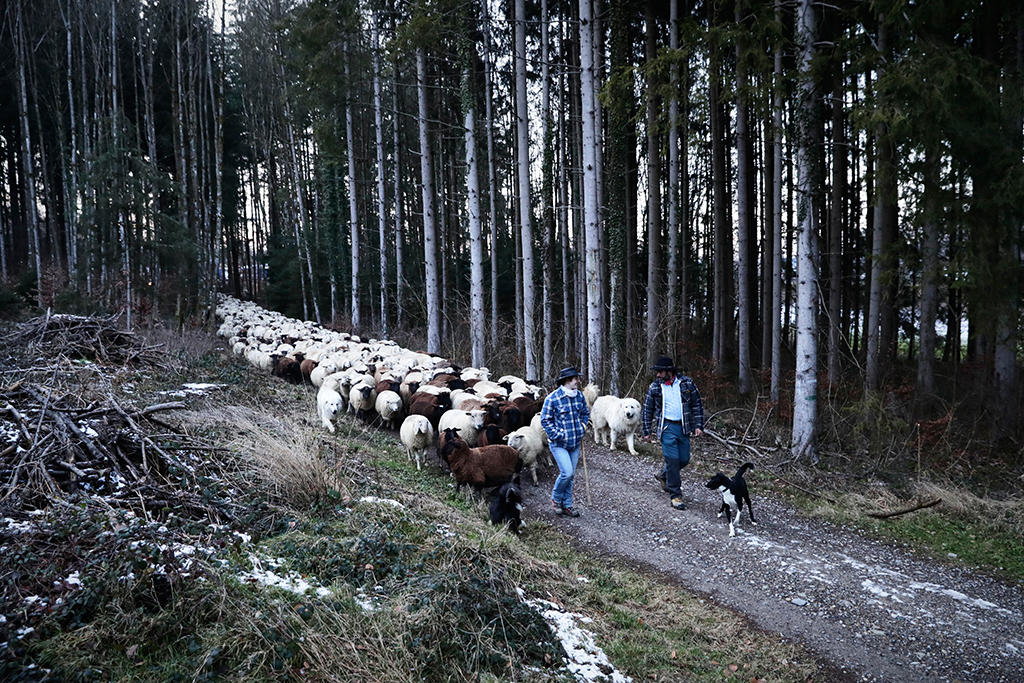
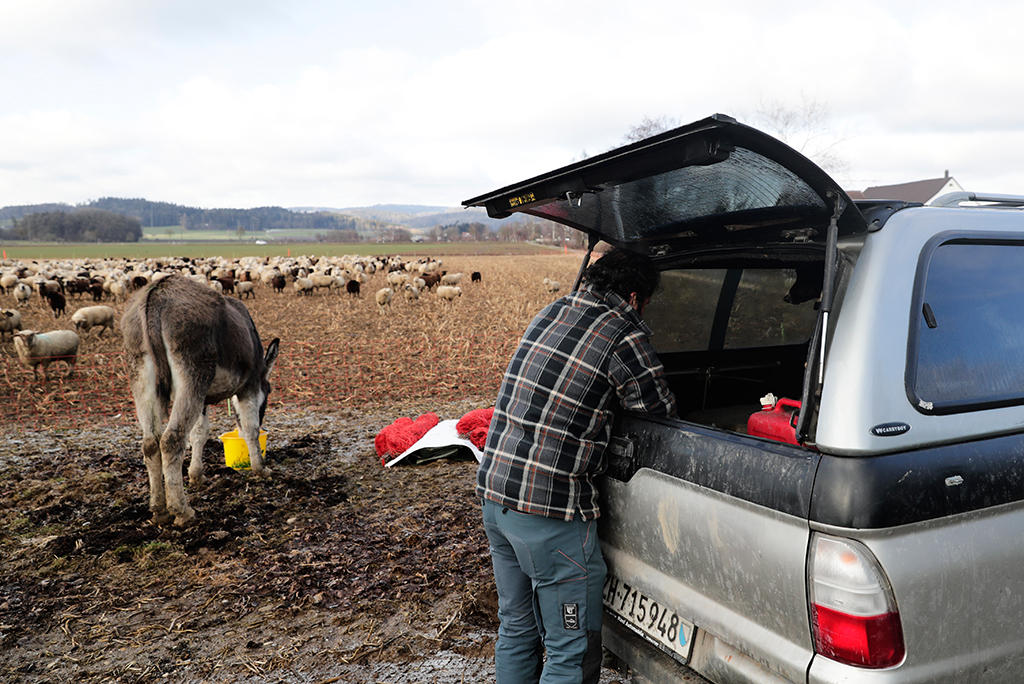
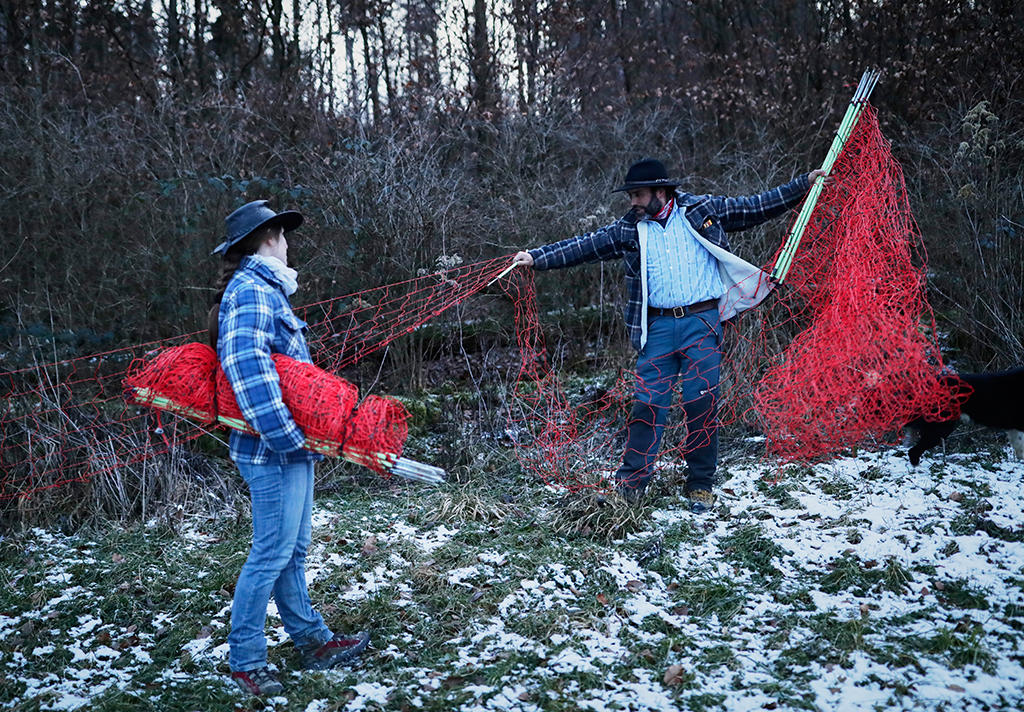

You can find an overview of ongoing debates with our journalists here. Please join us!
If you want to start a conversation about a topic raised in this article or want to report factual errors, email us at english@swissinfo.ch.